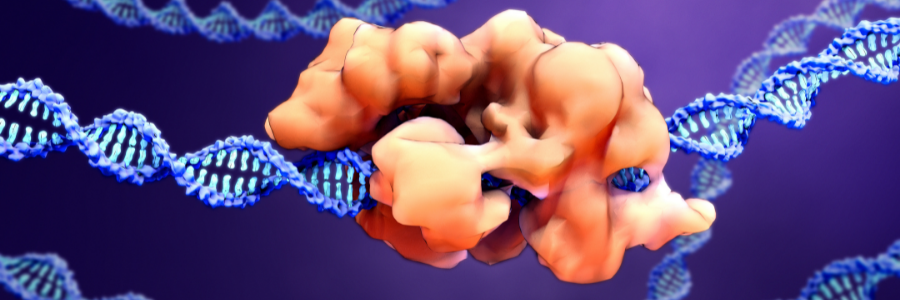Learning About CRISPR from a Genome Editor
Kenji Rowel Lim - November 01, 2021
“We’re able to modify the genome now in ways that we simply could not imagine several years ago,” Ben Kleinstiver, PhD, told attendees during ASGCT's most recent Professional Development Café.

CRISPR stood front and center during ASGCT’s latest Professional Development Café, “How To” with Cas 9 and CRISPR, a session led by genome editor and protein engineer Ben Kleinstiver, PhD. Kleinstiver is an assistant investigator at the Massachusetts General Hospital and assistant professor at the Harvard Medical School whose research group aims to improve the capabilities of CRISPR as a genome editing technology.
Kleinstiver began by talking about how CRISPR started. This is a well-known tale for many, but it was still every bit as inspiring to hear how an “obscure discovery” in bacteria became the powerful genome editing tool we know today. Following this historical journey, Kleinstiver described the numerous variants of CRISPR currently available to researchers. “We’re able to modify the genome now in ways that we simply could not imagine several years ago,” remarked Kleinstiver. Want to edit a gene? CRISPR can do that. Oh, you only want to edit a single base in a gene? No problem for CRISPR. How about regulating a gene? Yup, that’s doable with CRISPR too. It really is amazing how much CRISPR’s grown in such a short amount of time.
After hearing about all of these facets of CRISPR, it seems that it can do anything to the genome. But the truth is…not quite. This is what we learned in the next part of the café, when Kleinstiver went over the different properties of CRISPR enzymes and how these influenced the efficacy and safety of genome editing. Apparently (and expectedly), there are a lot of things we have to think about when designing a CRISPR experiment: is the part of the genome we want to edit accessible to CRISPR? Can we effectively deliver CRISPR to our tissue of choice? How well will CRISPR make the edits we want and, equally important, the edits we don’t want? The list goes on. Despite CRISPR being the revolutionary technique that it is, we are reminded that, as with any technique, we have to think things through very, very carefully before using it. On the bright side though, Kleintsiver mentioned that the field is getting better at addressing these concerns, so the situation keeps improving!
Kleinstiver then highlighted some of the recent achievements of CRISPR as a therapy. Preclinical data testing the efficacy of CRISPR therapies on Hutchinson-Gilford progeria, hemoglobinopathies, and cancer, to name a few, have been promising. Kleinstiver also described how CRISPR therapies have been applied to patients with sickle cell anemia, β-thalassemia, and transthyretin amyloidosis—super encouraging and exciting news for the field! Finally, for the last part of his talk, Kleinstiver shared a number of resources that people can use as a starting point for their own CRISPR experiments.
The café ended with a Q&A that covered a wide array of topics: technical genome editing questions, the future of CRISPR, ethics, etc. Kleinstiver’s response to a question about the ethics of CRISPR was particularly memorable. “Like many other scientific technologies, there’s a lot of responsibility on how people use and leverage these advances…as a community, if we continue to come together in a thoughtful process, developing rules about what is ethical and what’s not…hopefully that will continue to motivate people to use the technologies in positive ways,” he said. Indeed, perhaps that is the best way to summarize CRISPR as a field right now: a group effort in more ways than one.
ASGCT members can watch the full event here.
Kenji Rowel Lim is a postdoctoral researcher at Washington University in St. Louis and a member of ASGCT's Communications Committee.